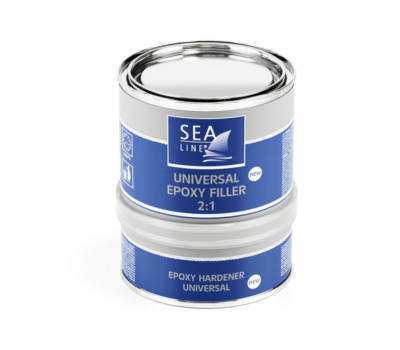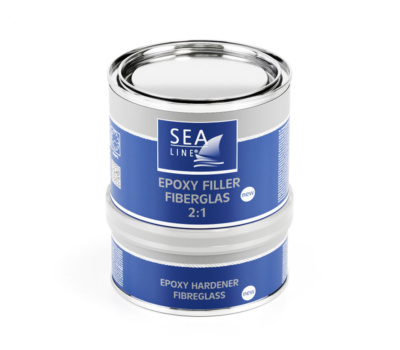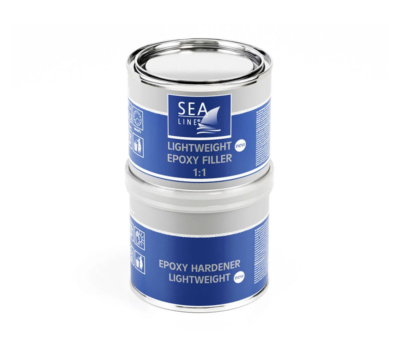Yacht-grade, spray polyester filler is recommended as a priming and finishing layer for use especially on large surfaces.
Spray filling provides a perfectly smooth surface effect because the filler is applied perfectly. In summary, the main advantages of spray polyester filler include efficiency, effectiveness, time savings, quick drying, and a favorable price.
| Weight | Code |
|---|---|
| 1 kg | 9071 |
| 10 kg | 7504 |
| 25 kg | 1192 |

| ype | GRP laminates, wood, steel, aluminum |
| Place | Above waterline |
| Function | Large surfaces |
| Application | Spray gun |
| Thinning | YES – 0-10% |
| Pot file 20°C | 20 min |
| Hardening time 20°C | 3 h |

Epoxy fillers are primarily the only fillers recommended for use on hull components constantly immersed

Epoxy fillers, including fiberglass filler, are primarily the only fillers truly recommended for use both

Recommended for large areas due to low own weight
It is not recommended to apply 2K paints over 1K paints. 1K and 2K inks differ in their composition and properties, including hardness, chemical resistance and durability. 1K paints are one-component and dry by evaporating the solvent, while 2K paints are two-component and need to be cured by adding a hardener. Applying 2K paint over 1K paint can cause unpredictable chemical reactions and lead to undesirable effects such as dulling, chipping or flaking of the paint. Therefore, always use paints according to the manufacturer’s instructions and do not mix different types of paints. farby zgodnie z instrukcjami producenta i nie mieszać różnych rodzajów farb.
There is a possibility of thinning antifouling, but we do not recommend this procedure due to the risk of reducing the effectiveness of the paint. If it is necessary to thin the antifouling paint, it is recommended to dilute it to a maximum of 0-5% (by volume).